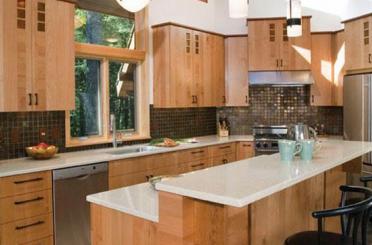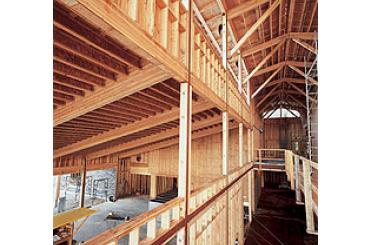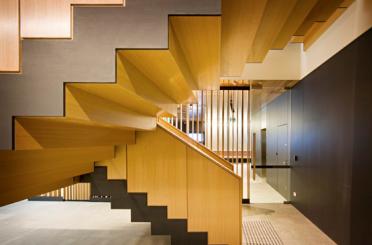
Plywood is an assemblage of wood veneers bonded together to produce a flat sheet. While it can be tailored to suit an extensive range of applications, the normal product consists of at least 3 plies, with the grain in the alternate plies running at right angles.
There are four groupings of plywood products, with each group designed for specific applications:
- Structural
- Exterior
- Interior
- Marine.
Plywood offers the following benefits:
Increased stability
Plywood offers all the inherent advantages of the parent wood plus enhanced properties in its laminated structure.
High impact resistance
Being a wood based material, plywood has the ability to accommodate the occasional short-term overload; up to twice the design load. This is useful where seismic activity or cyclonic winds can occur. This property is also effective when used as construction flooring or as concrete formwork. Plywood's laminated structure distributes loads from impact over a larger area on the opposite face, which effectively reduces the tensile stress.
Surface dimensional stability
The cross laminated construction of plywood ensures that plywood sheets remain relatively stable under changes of temperature and moisture. This is especially important in flooring and formwork construction where moisture exposure is very likely.
High strength to weight ratio
With high strength and stiffness to weight ratios, plywood is very cost effective to use in structural applications such as flooring, shearwalls, formwork and webbed beams.
Panel shear
The panel shear of plywood is nearly double that of solid timber due its cross laminated structure. This makes plywood a highly effective material to use in gussets for portal frames, webs of fabricated beams and as bracing panels.
Chemical resistance
Plywood does not corrode and can be used in chemical works and cooling towers as a cost-effective, durable material when preservative treated.

Cladding, External

Doors

Flooring
Framing

Joinery

Panelling, Interior

Portal Frames

Rails and Balustrades, Interior

Shear walls

Stairs, Exterior

Stairs, Interior

A. Lewis & Co. PTY LTD
Allied Forest Products
ALLKIND Joinery

Allmat Timber
Austim Pty Ltd
Austral Plywoods Pty Ltd
Australian Timber
Big River Group
Bligh Tanner

Branches Timbercraft

CADE Systems Pty. Ltd.

Cedar Windows Pty. Ltd.
Dekhar Outdoors
Dindas Australia Pty Ltd

Dromana Discount Timber

Fewings Joinery Pty Ltd
Franz Building Supplies

Garde Timber Pty Ltd

GreeniGo

Gunnersen Pty Ltd

HR Design Group Pty Ltd

ITI (Australia)
Logicoat

Ludbrook’s Joinery

Mathews Timber Pty Ltd

Matilda Veneer

Meyer Timber Pty. Ltd.

Pentarch Forestry
Premind Timber

Ridgewood Timber Pty Ltd

Simmonds

Timbertruss Northside

TLB Timber

Versace Timbers
















